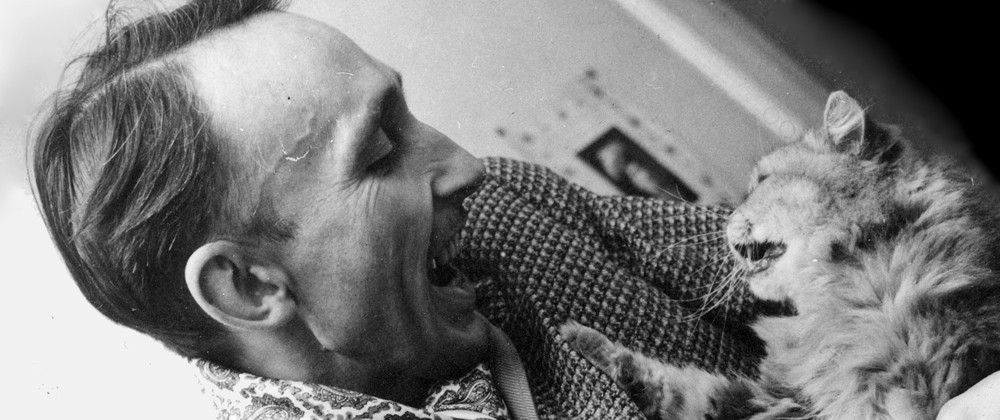MSt in Film Aesthetics: Reading List (Hilary)
In this post, you can find a list of all the readings that were set for Hilary/Term 2 of Oxford’s MSt in Film Aesthetics course (2019-2020).

Below you can find a list of all the readings that were set for Hilary/Term 2 of Oxford’s MSt in Film Aesthetics course (2019-2020).
Note: Each module took place over two weeks with two seminars and screenings per week.
Hilary 2020
Individuation in Technological and Natural Environments
Weeks 1 – 2
Week 1
- Vilém Flusser: ‘The Digital’, in Does Writing have a Future? (Minneapolis: University of Minnesota Press, 2011)
- Vilém Flusser: ‘To Celebrate’, in Into the Universe of Technical Images (Minneapolis: University of Minnesota Press, 2011)
- Richard Grusin: ‘Introduction’, in The Nonhuman Turn (Minneapolis: University of Minnesota Press, 2015)
- Mark B.N. Hansen: ‘Preface’ & pp. 1-10, in Feed-Forward – On the Future of 21st Century Media (Chicago: Chicago University Press, 2015)
- Katherine N. Hayles: ‘Prologue’, in How we became posthuman (Chicago: Chicago University Press, 1999)
- Ute Holl: ‘Part 1’, in Cinema, Trance and Cybernetics (Amsterdam: Amsterdam University Press, 2017)
- Kriss Ravetto-Biagioli: ‘Introduction’, in Digital Uncanny (Oxford: Oxford University Press, 2019)
- Scott C. Richmond (2016): pp. 121-44, in Cinema’s Bodily Illusions: Flying, Floating, and Hallucinating. Minneapolis: University of Minnesota Press (pp. 121-44).
- Gilbert Simondon (1965): ‘Culture and Technics’, in Radical Philosophy #189 (Jan/Feb 2015)
Week 2
- Adrian Ivakhiv (2013): Ecologies of the Moving Image. Ontario: Wilfred de Laurier Press (pp. vii-x, pp. 1-48).
- Félix Guattari (2014 [1989]): The Three Ecologies. London: Bloomsbury.
- Maurice Merleau-Ponty (1964): ‘Eye and Mind’, in The Merleau-Ponty Aesthetics Reader (Ed. Galen Johnson, 1993), Evanston: Northwestern University Press.
- Robert Smithson: ‘A Sedimentation of the Mind: Earth Projects’, in The Collected Writings (Los Angeles: University of California Press, 1996).
The Film-Philosophy of Stanley Cavell
Weeks 3 – 4
Week 3
Topic: The Ontology of Film
- Espen Hammer, Stanley Cavell, chapter 1
- Cavell, The World Viewed, chs 1-5; 11-15; pp 219-30, and xii-xiv
- Rothman and Keane, Reading Cavell’s The World Viewed, Chapters II, IV-VI
- Rodowick, The Virtual Life of Film (optional)
Topic: Genres of Film
- Cavell, Pursuits of Happiness, Introduction and Chapter One
- Cavell, ‘The Fact of Television’ (in Themes Out of School)
- Stephen Mulhall, ‘Stanley Cavell’ (in Costello and Vickery [eds], Art: Key Contemporary Thinkers
Week 4
Topic: Comedies of Remarriage
- Cavell, Pursuits of Happiness, Chapters 2-7, esp Chapter Two
- Cavell, Cities of Words, Chapters 8 and 16
- Cavell, Conditions Handsome and Unhandsome, Preface pp xvii-xxxviii
- Andrew Klevan, Barbara Stanwyck, Chapter 3
Topic: Melodramas of the Unknown Woman
- Cavell, Contesting Tears, esp. Chapters 3-5
- Tania Modleski, ‘Reply to Cavell’ Critical Inquiry 16 (Autumn 1990)
- Klevan, Barbara Stanwyck, Chapter Two
Art in Film
Weeks 5 – 6
Week 5
Passion (Godard, 1982)
Set reading:
- Kaja Silverman and Harun Farocki, Speaking about Godard (New York: New York University Press, 1998): 172-198 (Moving Pictures: Passion)
- Kaja Silverman and Harun Farocki, ‘To Love and to Work to Love: A Conversation about Passion’, Discourse vol. 15. no. 3 (1993): 57-75.
- James Tweedie, Moving pictures, still lives: film, new media, and the late twentieth century (New York: Oxford University Press, 2018) 115-132.
Further reading:
- Noël Burch, ‘Passions and Chases—A Certain Linearisation’ in Life to Those Shadows (La Lucarne de l’infini) transl Ben Brewster (London: BFI, 1990) 143-162.
- Jean-Luc Godard, Introduction to a True History of Cinema and Television transl Timothy Barnard (Montreal: caboose, 2014): 179-208 (on Pierrot le fou)
- Rudolph Arnheim, Art and visual perception: A psychology of the creative eye (Berkeley: University of California Press, 1974): 303-29 (‘Light’)
- Leo Bersani & Ulysse Dutoit, Forms of Being: Cinema, aesthetics, subjectivity (London: BFI, 2004): 1-10 (Introduction: ‘I don’t see’)
- Volker Pantenburg, Farocki/Godard: Film as theory transl Michael Turnbull (Amsterdam: Amsterdam University Press, 2014): 118-134 (On Passion)
Les Glaneurs et la glaneuse (Varda, 2000)
Set reading:
- James Tweedie, Moving pictures, still lives: film, new media, and the late twentieth century (New York: Oxford University Press, 2018): 217-39.
- Homay King ‘Matter, Time, and the Digital: Varda’s The Gleaners and I’ Quarterly Review of Film and Video, 2007, Vol.24(5), 421-429.
- Gilberto Perez, The Material Ghost: Films and their medium (Baltimore: Johns Hopkins University Press, 1998): 29-49 (‘The Documentary Image’)
Further reading:
- Kelley Conway, Agnes Varda (Urbana: University of Illinois Press): 71-88.
- Mireille Rosello, ‘Agnès Varda’s Les glaneurs et la glaneuse: portrait of the artist as an old lady’ Studies in French Cinema, 2001, Vol.I(1), 29-36.
- Agnes Varda and Andrea Meyer, ‘Gleaning the Passion of Agnès Varda’ in Agnès Varda: Interviews, edited by T. Jefferson Kline (University Press of Mississippi, 2014) 198-202.
Week 6
The Draughtman’s Contract (Greenaway, 1982)
Set reading:
- Brigitte Peucker, Incorporating images: Film and the rival arts (Princeton: Princeton University Press, 1995): Chapter 3, specifically 147-167; 168-173 (Afterword)
- Charles Rice, ‘The drama of identification: reflexivity, the apparatus and Peter Greenaway’s The Draughtsman’s Contract’ Critical Quarterly, Vol.42(2), 92-107.
- Cristina Degli-Esposti Reinert, ‘Neo-Baroque Imaging in Peter Greenaway’s Cinema’ in Peter Greenaway’s Postmodern/Poststructuralist Cinema ed. Paula Willoquet-Maricondi and Mary Alemany-Galway (Lanham, Maryland: Scarecrow, 2008) 51-78.
Further reading:
- David Pascoe, Peter Greenaway: Museums and Moving Images (London: Reaktion, 1997) 22-41 (from ‘Artificial Light’);66-91 (‘Fields of Vision’)
- Craig Owens, ‘The Allegorical Impulse: Toward a Theory of Postmodernism’ October, Vol. 12 (Spring, 1980), 67-86.
- Bridget Elliott and Anthony Purdy, Peter Greenaway: Architecture and Allegory (London: Academy Editions, 1997) 27-44 (‘On Common Ground’)
- Interview with Peter Greenaway in Take Ten: Contemporary British film directors ed. Jonathan Hacker and David Price (Oxford: Clarendon, 1991): 208-22.
- Stephen Bann, ‘Meaning/Interpretation’ in Critical Terms for Art History ed Robert S Nelson and Richard Shiff, second edition (Chicago: University of Chicago Press, 2003), 148-142.
Barbara (Petzold, 2012)
Set reading:
- W G Sebald, The Rings of Saturn transl Michael Hulse (London: Harvill, 1998) 12-17 (section on Rembrandt)
- Mieke Bal, Reading Rembrandt: Beyond the Word-Image Opposition (Cambridge University Press, 1994): 1-24 (Introduction); 388-398.
- Andrew Webber, ‘Good Work: Speed, Slowness and Taking Care in Christian Petzold’s Barbara’ in Time in German Literature and Culture, 1900 – 2015: Between Acceleration and Slowness ed. Anne Fuchs and Jonathan Long (London: Palgrave, 2016) 173-188.
Further reading:
- Michael Ann Holly, ‘Witnessing an Annunciation’ in Past Looking: Historical Imagination and the Rhetoric of the Image (Ithaca: Cornell University Press, 1996): 149-169.
- Jaimey Fisher, Christian Petzold (Urbana: University of Illinois Press, 2013): 138-45.
- Mieke Bal, Reading Rembrandt: Beyond the Word-Image Opposition (Cambridge University Press, 1994): 177-215 (‘Recognition’)
The Aesthetics of Italian Cinema
Weeks 7 – 8
Note: Includes set and further suggested readings
Week 7
Neorealism
- Bazin, André, ‘An Aesthetic of Reality: Cinematic Realism and the Italian School of the Liberation’ (1948) in What is Cinema? vol. 2 (Berkeley: University of California Press, 1971), 16-40
- Bondanella, Peter, Italian cinema: from neorealism to the present (New York : Continuum, 1993)
- Celli Carlo, ‘Ladri di biciclette’, in Bertellini G. (ed.), The Cinema of Modern Italy, Wallflower, 2004
- Forgacs David, ‘The Making and Unmaking of Neorealism in Postwar Italy’, in Hewitt N. (ed.), The Culture of Reconstruction: European Literature, Thought and Film. 1945-1950 (Basingstoke: Macmillan, 1989), 51-66
- Marcus, Millicent, Joy, Italian film in the light of neorealism, (Princeton: Princeton University Press, 1986)
- Ruberto L. and Wilson (eds), Italian Neorealism and Global Cinema (Wayne State UP, 2007)
- Shiel, Mark, Italian Neorealism (London: Wallflower, 2006)
- Wagstaff, Christopher, ‘The Place of Neorealism in Italian Cinema from 1945 to 1954’, in Hewitt N. (ed.), The Culture of Reconstruction: European Literature, Thought and Film. 1945-1950 (Basingstoke: Macmillan, 1989), 67-81
- Wagstaff, Christopher, Italian neorealist cinema : an aesthetic approach; Toronto ; London: University of Toronto Press, 2007
Rossellini
- Armes, Roy, Patterns of Realism, Cranbury, 1971. Ch. 3.1
- Bondanella, Peter, Italian Cinema from Neorealism to the Present, ch.2., Continuum 1993
- Brunette, Peter, Roberto Rossellini, Oxford UP, 1987.
- Forgacs D., S. Lutton, G. Nowell-Smith (eds), Roberto Rossellini: Magician of the Real, London, 2000
- Forgacs, David, Rome Open City, London, 2003
- Gottlieb, Sidney (ed.), Roberto Rossellini’s Rome Open City (Cambridge UP, 2004)
- Marcus, Millicent, Italian Film in the Light of Neorealism ch.I.1, Princeton UP, 1986
- Liehm, Mira, Passion and Defiance: Film in Italy from 1942 to the Present,
- Steimatsky, Noa, Italian Location: Reinhabiting the past in postwar cinema, Minnesota U.P., 2008; ch. 2.
- Wagstaff, Christopher, Italian neorealist cinema : an aesthetic approach; Toronto ; London : University of Toronto Press, 2007; chs on Rome Open City
De Sica
- Armes R., Patterns of Realism, Cranbury, 1971. Ch. 3.1
- Bazin A., ‘Neorealism and Pure Cinema: Bicycle Thieves’, (L’Esprit, Nov 1949) then in Bazin André and Cardullo Bert (eds), André Bazin and Italian Neorealism, NY: Continuum, 2011 (also in What is Cinema, vol. 4)
- Curle, Howard (ed.), Vittorio De Sica: Contemporary Perspectives (Toronto UP, 2002)
- Gordon R., Bicycle Thieves, BFI, 2008
- Marcus, M., Italian Film in the Light of Neorealism ch.I.2.
- Overbey D., Springtime in Italy: A Reader on Neorealism, 1978.
- Wagstaff C., ‘Analysis of Ladri di Biciclette’, in Forgacs & Lumley (eds), Italian Cultural Studies: An Introduction, Oxford, 1996, pp 261-265.
- Wagstaff C., Italian Neorealist Cinema: An Aesthetic Approach, TUP, 2007
Week 8
Fellini
- Bondanella, Peter, The Cinema of Federico Fellini, Princeton UP, 1992, ch. 3
- Bondanella, Peter, Federico Fellini: Essays in Criticism, OUP 1978
- Budgen, S., Fellini, London, 1966
- Burke, Frank. Variety Light to Dolce Vita, London, 1987
- Burke, Frank and Marguerite R. Waller (ed), Federico Fellini: Contemporary Perspectives, TUP, 2002, ch. 5
- Chandler C., Fellini, London, 1996,
- Kezich T. and Proctor M., Federico Fellini: His Life and Work, London 2007, ch. 23
Sorrentino
Given the lack of academic works on the subject, here is the reference to two essays plus a selection of reviews:
- Simor, Eszter, and Sorfa, David. “Irony, Sexism and Magic in Paolo Sorrentino’s Films.” Studies In European Cinema 14.3 (2017), pp. 200-215
- Tuan, Lydia. “Paolo Sorrentino’s Cinematic Excess.” Journal Of Italian Cinema & Media Studies 7.3 (2019), pp. 425-442.
- Phillip Lopate, ‘The Great Beauty: Dancing in Place’, The Criterion Collection’s Film Essays: https://www.criterion.com/current/posts/3109-the-great-beauty-dancing-in-place
- Robbie Collin, Daily Telegraph: http://www.telegraph.co.uk/culture/golden-globes/10072554/The-Great-Beauty-review.html
- Manohla Dargis, New York Times: http://www.nytimes.com/2013/11/15/movies/the-great-beauty-starring-toni-servillo.html?pagewanted=all
- Jonathan Romney, Film Comment: http://www.filmcomment.com/entry/review-the-great-beauty-paolo-sorrentino
- Jay Weissberg, Variety http://variety.com/2013/film/reviews/cannes-film-review-the-great-beauty-1200484710/


